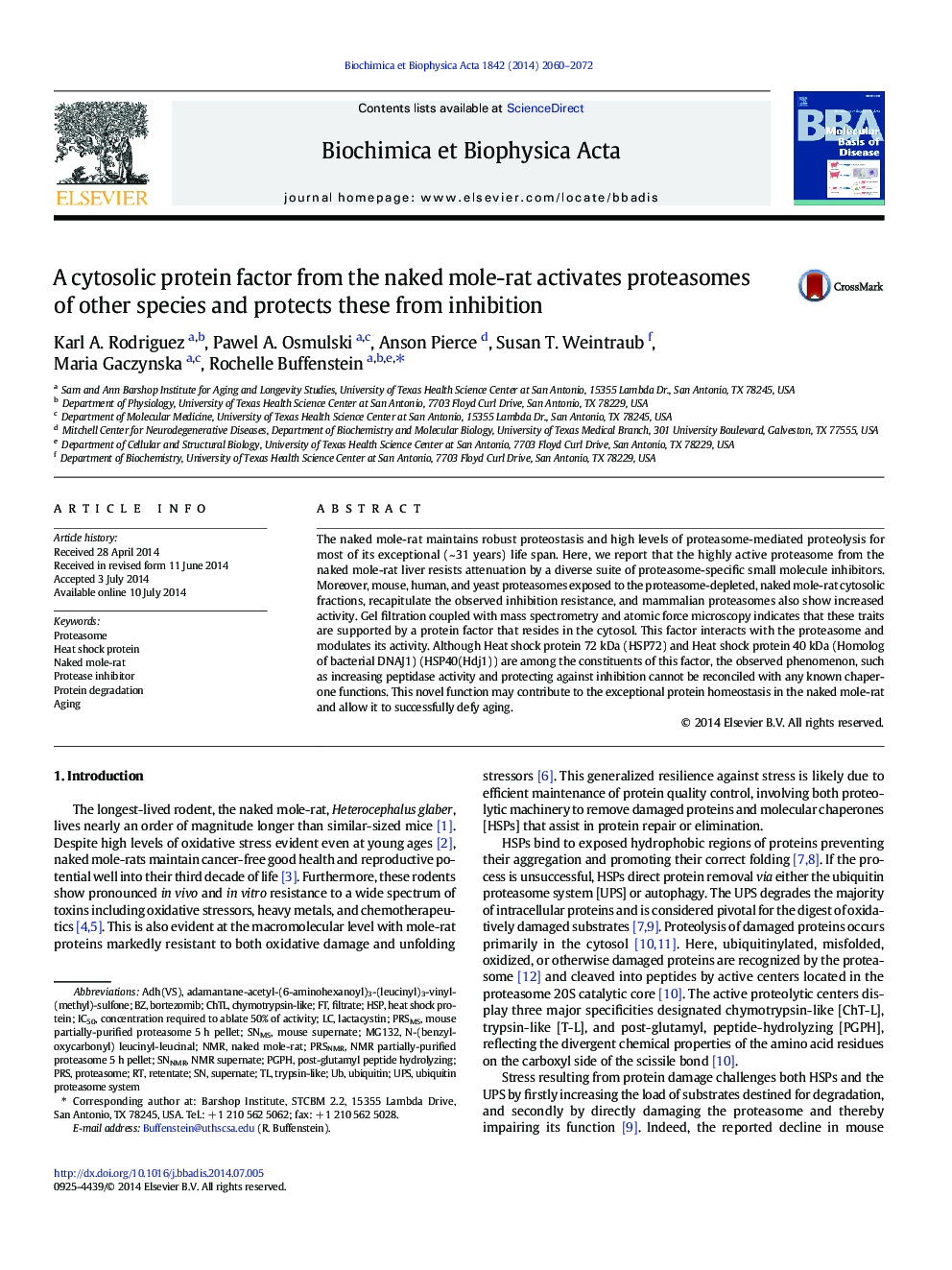| Article ID | Journal | Published Year | Pages | File Type |
|---|---|---|---|---|
| 1904715 | Biochimica et Biophysica Acta (BBA) - Molecular Basis of Disease | 2014 | 13 Pages |
•The naked mole-rat proteasome is protected from inhibition.•This is accomplished by a transferable chaperone-containing cytosolic factor.•The factor interacts with naked mole-rat proteasome enhancing its activity.•This factor protects and increases proteasome function of widely divergent species.•The factor participates in a novel mechanism that may help to defy cellular aging.
The naked mole-rat maintains robust proteostasis and high levels of proteasome-mediated proteolysis for most of its exceptional (~ 31 years) life span. Here, we report that the highly active proteasome from the naked mole-rat liver resists attenuation by a diverse suite of proteasome-specific small molecule inhibitors. Moreover, mouse, human, and yeast proteasomes exposed to the proteasome-depleted, naked mole-rat cytosolic fractions, recapitulate the observed inhibition resistance, and mammalian proteasomes also show increased activity. Gel filtration coupled with mass spectrometry and atomic force microscopy indicates that these traits are supported by a protein factor that resides in the cytosol. This factor interacts with the proteasome and modulates its activity. Although Heat shock protein 72 kDa (HSP72) and Heat shock protein 40 kDa (Homolog of bacterial DNAJ1) (HSP40(Hdj1)) are among the constituents of this factor, the observed phenomenon, such as increasing peptidase activity and protecting against inhibition cannot be reconciled with any known chaperone functions. This novel function may contribute to the exceptional protein homeostasis in the naked mole-rat and allow it to successfully defy aging.
Graphical abstractFigure optionsDownload full-size imageDownload high-quality image (167 K)Download as PowerPoint slide
